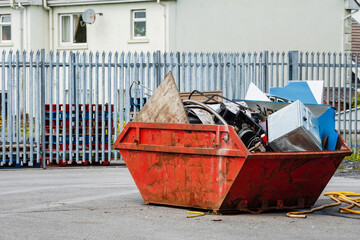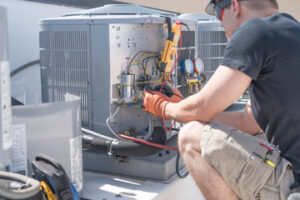Whether you’re cleaning out your basement, preparing to move, or renovating a home, junk removal companies can help. They recycle and donate items, keep landfills from overflowing, and reduce energy consumption.
Pricing varies. Some companies charge by time, others by weight or truck volume based on cubic yards. Some have additional fees for hazardous materials, cleanup, and rush appointments. For professional assistance, contact Sgt Junk-It.
Junk removal companies are a great alternative for businesses that can’t recycle or otherwise dispose of large amounts of materials. These services can be incredibly useful for cleaning offices, warehouses, and homes. However, getting started in this business requires a lot of upfront investment and can be difficult to scale up.
The first step in getting started is figuring out what type of junk removal you want to do. Some companies offer a full service option, while others only haul away specific types of waste. It’s also important to decide whether you want to provide residential or commercial services. This will affect how much you can charge, as well as any licensing requirements you might have to meet.
Next, you should create a business plan. This is an essential document that defines the goals and objectives of your company. It will help you keep track of your progress and identify potential problems. It’s also helpful for establishing a budget and determining how much money you need to invest in the business. You should also register your business, which is necessary for raising capital and paying taxes.
Once you have a business plan, the next step is finding work. You can do this by advertising on Craigslist or other websites. You can also ask friends and family to recommend you. It’s important to have a good reputation, so make sure you deliver quality service.
Another way to find jobs is to attend business networking events. These events will give you the opportunity to network with other junk removal professionals and learn more about the industry. In addition, you can use social media to promote your business and reach new customers.
Finally, it’s essential to get insurance for your junk removal business. This will protect you in the event of an accident or theft. Make sure you buy general liability, commercial auto and workers’ compensation coverage. These policies will protect you from costly lawsuits and ensure that your business can continue operating in the event of an unforeseen circumstance.
A junk removal business can be a lucrative investment for the right person. However, it’s a challenging career that can be stressful at times. You’ll experience ups and downs, including busy times with big profitable jobs followed by stagnant weeks and truck repairs. This business is also physically demanding and you’ll need to be able to perform hard labor in dirty environments for long periods of time.
Pricing
Junk removal is a competitive business, and pricing is a crucial component of establishing a sustainable service model. The right pricing balances customer needs and profitability, while allowing the company to attract and retain customers.
In the beginning, junk removal companies may offer different prices for their services depending on their local market demand, location, and labor costs. They can also set rates for various types of waste, such as electronic scrap, hazardous material, and construction debris. These different rates reflect the cost of processing and disposing of these different materials.
Other factors that influence pricing for junk removal include the size and weight of each load, special handling requirements, and disposal fees. For example, a heavy or bulky item such as a piano or refrigerator requires extra staff to move and remove, increasing the overall cost. Additionally, certain items have additional disposal charges, including paint, freezers, air conditioning units, and fluorescent lights.
A junk removal business’s pricing structure should also take into account the local market rate and competition. The average junk removal rate varies from region to region due to differences in the cost of living and labor rates, but it is important for a company to keep their pricing in line with the industry standard in their local area to ensure that they remain profitable.
In addition to assessing local markets and competitors, junk removal businesses should review their pricing regularly. This is because the junk removal industry is a highly competitive sector, and keeping up with market trends is essential for long-term sustainability.
For instance, a rise in fuel or transportation costs can significantly impact the price of hauling and landfill costs. Similarly, a reduction in the cost of labor can reduce a company’s overhead and increase profits.
As with other industries, junk removal is a complex and multifaceted job. For that reason, it is difficult for companies to provide exact pricing over the phone or online. Instead, most companies will provide a quote after one of their employees performs an onsite evaluation of the junk. The goal is to provide an accurate estimate that will help the client understand the full cost of the service.
Insurance
Most junk removal jobs go smoothly, but like any other business, there’s always a risk that something could go wrong. That’s why having adequate insurance coverage is essential. Junk removal businesses should consider general liability, workers’ compensation, and commercial auto insurance.
General liability insurance protects junk removal companies from claims of bodily injury or property damage resulting from their operations. For example, if an employee accidentally damages a client’s door frame when moving heavy items into the truck, a general liability policy would cover the costs of repairs or replacements. In addition, this type of policy provides third-party bodily injury and property damage coverage, which covers claims made by clients or bystanders.
Junk removal employees are often at risk for back injuries, cuts, and other workplace hazards. This type of insurance protects them if they are injured while performing their job duties and can help pay for medical expenses or lost wages. Additionally, if an employee is killed on the job, this insurance will cover funeral expenses and loss of income.
Having commercial auto insurance is necessary for junk removal businesses, as they often have fleets of vehicles that are used to transport items to and from customers’ homes or offices. In addition, these vehicles are likely to be driven by employees, which increases the risk of accidents and other damage. Commercial auto insurance will help cover repair costs, medical expenses for involved parties, and legal fees.
Junk removal businesses also need to have workers’ compensation insurance in case an employee is injured while working on a job. This type of insurance will cover medical expenses and wage compensation if an employee is injured in the course of their work, protecting the business from costly lawsuits. Most states require employers to carry this type of insurance for their employees. In addition, some insurance providers offer business owner’s policies (BOPs), which bundle several types of insurance into one package. These policies are typically less expensive than purchasing individual policies. They’re ideal for small business owners who want to minimize their insurance costs. However, it’s important to carefully review all policy options before choosing a provider.
Transparency
Junk removal services aren’t just about picking up and hauling away trash. They also work to give back to their communities and protect the environment. They do this by sending items that can be repurposed with other owners or donated to local shelters and relief organizations. The goal is to make sure that any salvageable junk doesn’t end up in landfills.
When hiring a junk removal service, it’s important to find out what they can and cannot take. Many services will only accept non-hazardous junk. They are also limited in the size of what they can lift and move on their trucks. They may not be able to take large appliances, furniture, or electronics. They may not even be able to get to hard-to-reach places like attics or crawl spaces.
If you have a particular item that you need to dispose of, it’s best to contact the company directly to ask what their policies are. Some companies may have specific recycling programs, while others will simply dump all of the junk in a landfill. Be aware of these practices so that you can choose a junk removal service that works with the community and the environment.
In addition to promoting transparency, a good junk removal company should be easy to work with. They should answer questions promptly, offer competitive pricing, and provide excellent customer service. They should also make sure that all of their employees are up-to-date on the latest safety regulations.
Junk removal companies can help you declutter your home or office and regain valuable space. They can also help you reclaim your driveway, walkways, and front yard. They can also handle property cleanouts for landlords, real estate agents, and senior living facilities. Whether you need to clear out a basement, attic, or garage, junk removal is an affordable option that can save you time and money. By taking the stress and responsibility of removing junk off your hands, you can focus on other aspects of your life. The benefits of working with a professional junk removal company are worth it.



